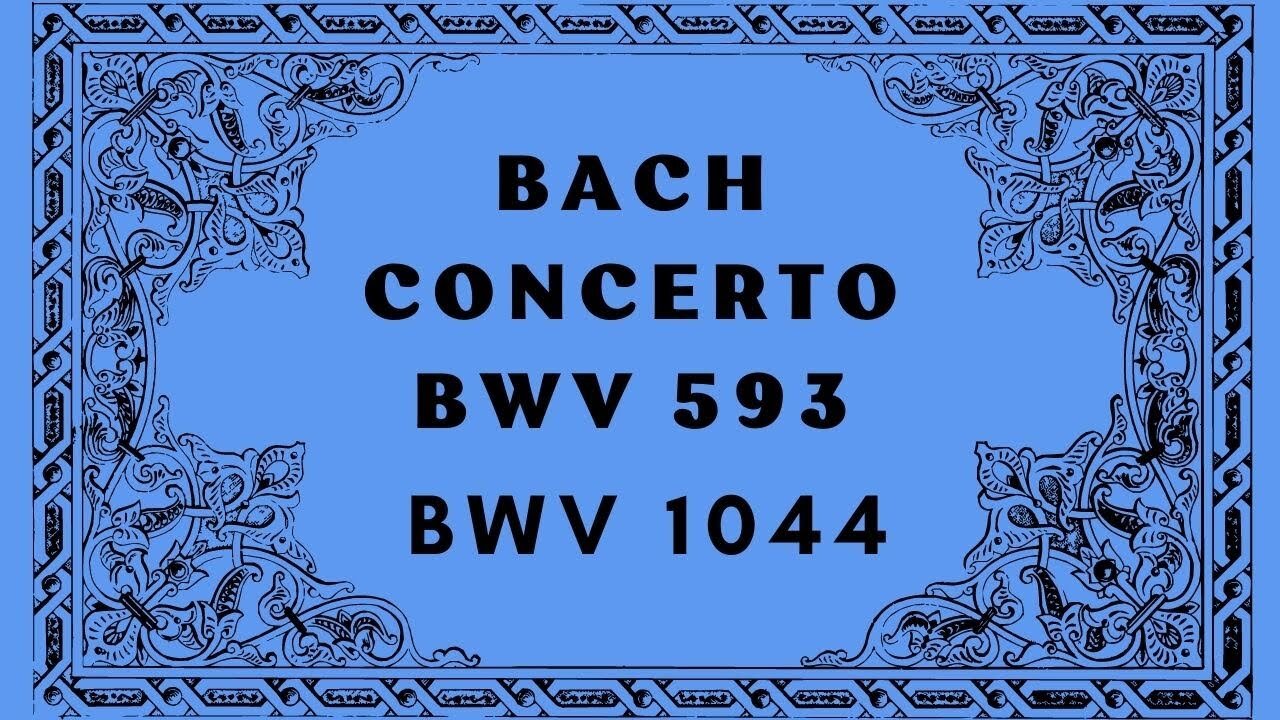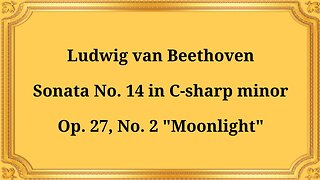Premium Only Content

Bach Concerto in A major for orchestra BWV1044/Bach Organ Concerto in A minor, BWV 593
Bach Concerto in A major for orchestra BWV 1044
Johann Sebastian Bach was a German composer and musician of the Baroque period. He is widely considered one of the greatest composers of all time, known for his incredible contributions to music theory, harmony, and counterpoint. One of Bach's most celebrated works is the Concerto in A major for orchestra, BWV 1044.
The Concerto in A major for orchestra, also known as the "Triple Concerto," was composed by Bach around 1730. It is unique in that it is one of the only works by Bach that features three solo instruments: flute, violin, and harpsichord. The work is in three movements: Allegro, Adagio ma non tanto e dolce, and Allegro.
The first movement of the concerto is a lively Allegro, marked by a virtuosic harpsichord solo that weaves in and out of the orchestral accompaniment. The flute and violin also have opportunities to shine, with intricate solo passages that showcase the players' technical abilities.
The second movement is an Adagio, marked by a gentle, lilting melody that is passed between the three solo instruments. It is a beautiful moment of repose in an otherwise energetic work, with a warm, rich harmony that is typical of Bach's style.
The final movement is another Allegro, featuring a lively fugue that showcases the composer's skill in counterpoint. The three solo instruments again trade off virtuosic passages, with the orchestra providing a steady accompaniment.
The Concerto in A major for orchestra, BWV 1044, is a testament to Bach's mastery of counterpoint, his ability to write for multiple solo instruments, and his talent for creating works that are both technically challenging and musically beautiful. It is a staple of the Baroque repertoire and remains a beloved work among classical music enthusiasts.
In conclusion, the Concerto in A major for orchestra, BWV 1044, is a remarkable example of Bach's musical genius. Its use of three solo instruments and intricate counterpoint make it a unique and memorable work that continues to captivate audiences today. Its beauty and complexity have secured its place as one of the greatest works of the Baroque period.
1. Allegra 00:00
2. Adagio, ma non tanto 09:15
3. Alla breve 15:20
Bach Organ Concerto in A minor, BWV 593
Bach Organ Concerto in A minor, BWV 593, is a piece of Baroque music composed by Johann Sebastian Bach. It is an arrangement of the Concerto in A minor for solo violin and strings by Italian composer Antonio Vivaldi. Bach's transcription of Vivaldi's concerto was written for the organ, and it is considered one of the most famous and important works in the organ repertoire.
Bach's transcription of Vivaldi's Concerto in A minor for solo violin and strings is thought to have been completed around 1713-1714. The piece is written for solo organ and string orchestra, and it consists of three movements:
I. Allegro, in A minor
II. Adagio, in F major
III. Allegro, in A minor
The first and third movements are in A minor, while the second movement is in F major. The piece is known for its virtuosic organ writing and its beautiful, lyrical melodies.
Bach's Organ Concerto in A minor, BWV 593, is often performed by organists around the world. The piece is a favorite of organists because of its beautiful melodies, intricate counterpoint, and virtuosic organ writing.
One of the most famous performances of the piece was given by the legendary Canadian organist, Healey Willan, who recorded it in 1946 on the Casavant Frères pipe organ at St. Paul's Anglican Church in Toronto, Canada. Other famous organists who have performed the piece include Helmut Walcha, Ton Koopman, and Simon Preston.
Bach Organ Concerto in A minor, BWV 593, is a beautiful and important piece of Baroque music. Bach's transcription of Vivaldi's concerto for solo violin and strings is a masterpiece of the organ repertoire, and it is admired by organists and music lovers around the world. The piece is known for its virtuosic organ writing, its intricate counterpoint, and its beautiful, lyrical melodies.
1st_movement 22:35
2nd_movement 26:27
3nd_movement 28:49
#Bach #Organ_Concerto #classical_music #music_inspiration
-
 18:26
18:26
Classical music_Music Inspiration
1 month agoLudwig van Beethoven Sonata No. 14 in C-sharp minor, Op. 27, No. 2 "Moonlight"
841 -
 LIVE
LIVE
DoldrumDan
2 hours agoCHALLENGE RUNNER BOUT DONE WITH ELDEN RING NIGHTREIGN STORY MODE HUGE GAMING
77 watching -
 10:59
10:59
itsSeanDaniel
1 day agoEuropean Leaders INSTANTLY REGRET Disrespecting Trump
19.6K16 -
 16:43
16:43
GritsGG
17 hours agoThey Buffed This AR & It Slaps! Warzone Loadout!
18.1K1 -
 2:05:30
2:05:30
Side Scrollers Podcast
21 hours agoEveryone Hates MrBeast + FBI Spends $140k on Pokemon + All Todays News | Side Scrollers Live
114K12 -
 11:06
11:06
The Pascal Show
15 hours ago $1.47 earned'THEY'RE GETTING DEATH THREATS!' Jake Haro's Lawyer Breaks Silence On Emmanuel Haro's Disappearance!
18.6K2 -
 LIVE
LIVE
Lofi Girl
2 years agoSynthwave Radio 🌌 - beats to chill/game to
314 watching -
 2:19:32
2:19:32
Badlands Media
1 day agoDEFCON ZERO Ep. 005: False Flags, Cyber Fronts & Global Power Plays
159K72 -
 2:35:23
2:35:23
FreshandFit
10 hours agoWhy Black Men Don't Date Black Women Debate
46.5K48 -
 2:03:42
2:03:42
Inverted World Live
14 hours agoBigfoot Corpse Coming to the NY State Fair | Ep. 94
113K27